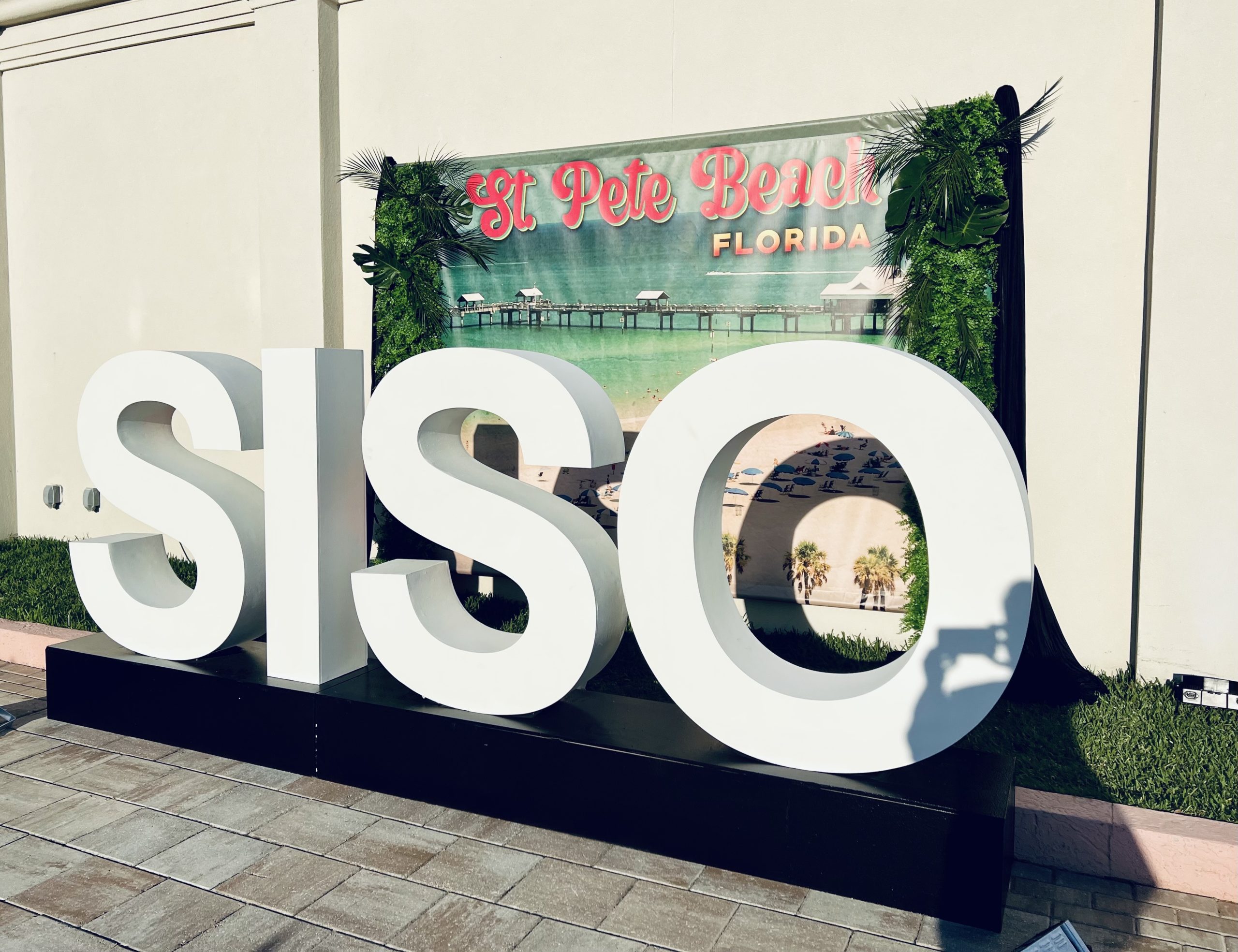By Rich Vallaster, Director of Marketing
It’s hard to believe a year has passed since my first official trade show-related travel to the SISO CEO Summit last year. While many things have changed, some have stayed the same. As I reflect on this year’s event, the first word that comes to mind is gratitude.
Each trade show and conference I have attended as an attendee, exhibitor/sponsor, or guest – everyone is so thankful to be in person. We are reminded of our need to connect face to face in ways technology will never replace. The awkward moments of figuring out if you should handshake or stay distanced have mostly been replaced with hugs, long embraces, and big smiles.
Here are my five quick takes on this year’s event.
Bullish On In-Person Events
One thing was clear event organizers are optimistic about events coming back even stronger this year. Nearly everyone I spoke with has already hosted several live events or is actively planning their events for this year. What everyone wanted to know was how successful their events were.
Much like Rachel Wimberly so eloquently penned in her article Please Stop Asking if Attendance Was Down At Shows Running Right Now, I am happy to report many shows have seen pre-pandemic level attendance. In contrast, others have had fewer attendees (anecdotal average ranged from 50-70% of pre-pandemic levels). Still, the real news story continues to be that overall satisfaction scores from their attendees, exhibitors, and sponsors are higher. So, if you are actively talking to your exhibitors, this is the narrative you need to share and the approaches you need to take at this stage. is no longer an excuse.
Hybrid Events Are Evolving (Again)
Understanding the role of “digital” in events was a hot topic. Those with trade show components argued (vigorously) that simultaneous hybrid events are not the future. Many said that hybrid events created mixed messages for their most valuable exhibitors/sponsors and many attendees. There was no virtual replacement for the experience of the trade show floor. Rising AV/Wi-Fi costs, limited staff experience, and challenges with simulcasting events were also a big concern for organizers attempting to orchestrate hybrid events.
Those who were more optimistic about digital experiences were content-heavy at their events. They were leveraging digital formats to continue to serve education content to their audiences. They agreed that, ideally, whatever the digital strategy was, it would drive in-person attendance and connect with audiences to increase their in-person events. Those with educational components often used the content after the live event.
This year’s most exciting concept was how some organizers leverage their digital assets, events, webinars, and content as a testing ground for their in-person events. What were people consuming? What were people engaging with the most? What could this data inform about their in-person events or new events based on this information? It solved two strategies, engagement and direction, and push towards their in-person events.
Are Events Like Riding a Bike?
While the excitement and energy to return to live events is palpable, leaders shared the need to recognize the challenges and toll the past two years have taken on event professionals. Everyone is a little rusty. Some have only recently started to travel and things that were second nature are no longer. Many teams have new staff members or are smaller, so duties are being shared. Across the entire event partner ecosystem this is the case and we need to practice patience and understanding (and plan more time in all our event plans this year).
The New Uncertainties
As the pandemic has evolved, each variant continued to lead to more uncertainty. However, on a positive note, science and data point to less problematic variants in the future, but events have also been able to stage safely, even during Omicron.
What is keeping up show organizers at night now? The new uncertainties. Supply chain issues, inflation (or stagflation), increasing costs (labor, gas, etc.), staffing shortages, the growing political divide, and geopolitical forces such as the war in Ukraine. None are showstoppers now, but the combination of factors makes organizing events even more challenging.
An Eye to the Future
As the “new normal” begins to occur, organizers are again prioritizing initiatives such as Diversity, Equity, and Inclusion (DEI) and sustainability in their event planning. In addition, as new audiences emerge and younger generations look to engage with events, they want them to align with their beliefs. Some show organizers shared the challenge of simply staging an event, let alone tackling these generation-old challenges. Others felt now was the time to make our events more reflective of the world around us.
There was agreement that all our event attendees may no longer be those of the past, same for our exhibitors and sponsors. Therefore, approaching how we run events needs to evolve and understand how those have impacted our events carefully. The change may be slight for many, while others may be more pronounced.
There were so many deep and meaningful conversations in just a few short days I can’t put them in one simple blog post. And while I came back less tired than last year, I was still slightly out of practice attending an event. Nevertheless, the entire SISO team continues to put on a quality event to connect leaders in the industry to talk openly and honestly about the challenges and opportunities facing event professionals. In August, I can’t wait to see new faces at the SISO Summer event in Oklahoma City.
